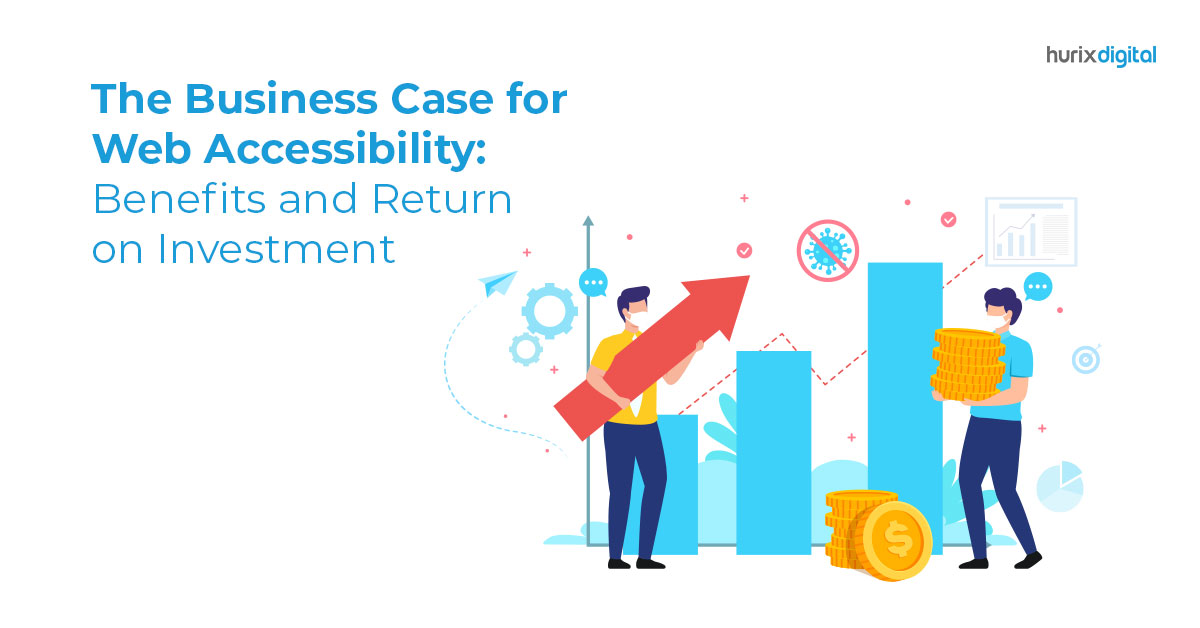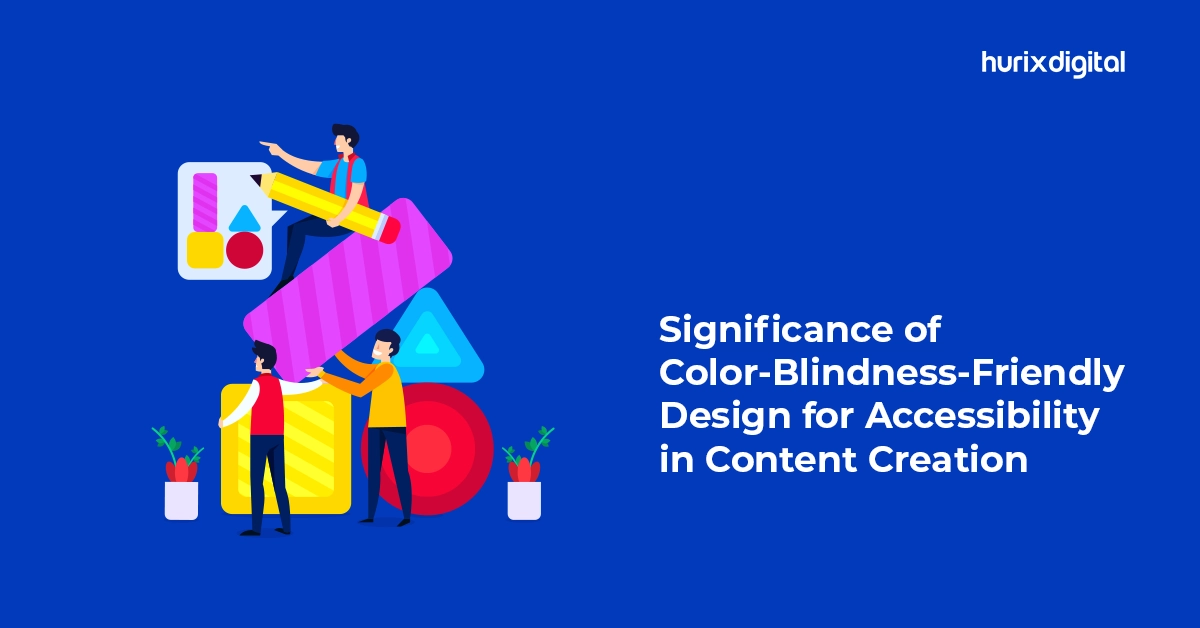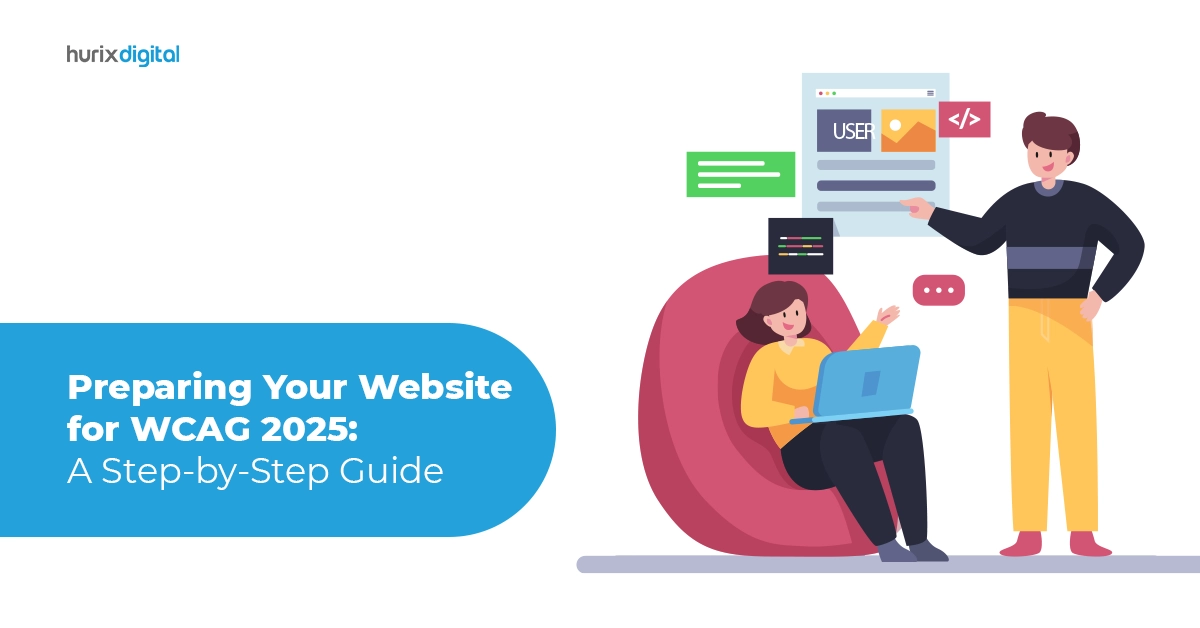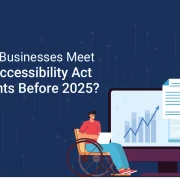
The Business Case for Web Accessibility: Benefits and Return on Investment
Summary
This article outlines the business case for web accessibility, highlighting its benefits, return on investment, and how implementing accessible design can enhance user experience and compliance.
Over one billion people worldwide belong to the largest marginalized group- individuals with disabilities. The potential for businesses to tap into this vast market and achieve a significant return on investment is immense. However, accessibility solutions have benefits that go beyond just money.
Accessibility is essential to guaranteeing equitable opportunities for everyone. Companies can unlock new ideas, perspectives, and solutions by embracing accessibility. Organizations increase their chances of capturing a sizable market share by making their digital products available and accessible to a broader audience translating into a higher return on investment (ROI) and optimized workflows.
In an ideal world, businesses would prioritize web accessibility and inclusivity from the very beginning of website and software development. However, the reality falls short. Digital accessibility lawsuits under the ADA are surging, and astoundingly, 98% of the United States websites do not comply with WCAG. It’s time for a change.
Table of Contents:
The Power of Web Accessibility
A comprehensive business case for accessibility should not only focus on the financial benefits but also highlight the expenses and dangers of inaction. Businesses can become more creative, inclusive, and compliant with international regulatory website accessibility standards by considering various motivating factors and implementing an integrated accessibility program.
A survey of Fortune 100 organizations found that high-performing companies frequently practice disability inclusion as part of a broader diversity strategy. If you’re a business leader or decision-maker, investing in accessibility for websites is not just the right thing to do, but it’s also a wise move that can benefit your brand, your revenue, and the clients you serve.
Also Read: Why Colour Contrast Matters for Web Accessibility?
Benefits of Web Accessibility
Consider the numerous opportunities ahead if you’re prepared to make a difference and unleash the untapped potential of web accessibility. In this post, we’ll examine the strong arguments in favor of having benefits of web accessibility a top priority for organizations, along with its numerous advantages and impressive return on investment (ROI).
1. Embracing Inclusion
In an ever-connected world, inclusivity is no longer a mere option but a necessity. Addressing diverse limitations requires a range of actions. Picture this: 300 million people worldwide, nearly the population of the United States, are color deficient. Websites must speak to blind users through text readers, while visually impaired individuals need adjustable fonts and vivid colors.
For those unable to hear, subtitles and sign language videos make audio content accessible. Fosters equal opportunities and inclusivity by making your website accessible to everyone, regardless of their abilities. A genuinely holistic user experience aligns with moral principles while consolidating your brand reputation and customer loyalty.
2. Mitigating Legal and Reputational Risks
In today’s digital environment, ensuring accessibility for websites is not just a question of good practice but also a legal imperative. 11,452 federal lawsuits were filed in 2021, a record number of ADA Title III claims. Surprisingly, roughly 2,500 of these cases in 2020 centered on inaccessible digital information on websites.
In addition to the financial risks of litigation, non-compliant businesses may be subject to several lawsuits for accessibility violations. Laws worldwide, such as the Americans with Disabilities Act (ADA), emphasize the need for digital accessibility to safeguard the rights of individuals with disabilities. A surge in digital accessibility lawsuits under the ADA section 508 emphasizes the significance of prompt and accurate addressing of web accessibility problems to avoid legal repercussions.
Failure to comply with website accessibility standards and disregarding the rules can expose businesses to litigation risks and complaints, which can be detrimental to their finances and reputation.
3. Boosting User Experience and Engagement
The benefits of Web accessibility solutions encompass accommodating those with disabilities and beyond by enhancing the overall user experience for everyone. Develop a seamless and pleasurable experience while allowing users of all abilities to navigate the website with ease by:
- Adopting inclusive design principles
- Adhering to internationally-recognized website accessibility standards, including:
- Intuitive navigation
- Legible text
- Alternative media formats
- And more!
The Web Content Accessibility Guidelines (WCAG 2.1) is a set of standards and methodologies created to assist designers and developers in rendering digital venues accessible. Web accessibility compliance fosters positive engagement and encourages extended browsing sessions- boosting conversions.
4. Expanding Your Customer Base
According to WHO statistics, 15% of the global population has a disability. By implementing web accessibility, you tap into this vast market, reaching potential customers who might have previously faced barriers to accessing your products or services.
According to research, 86% of people prefer companies that cater to all users, and 64% are even willing to invest in them. Unfortunately, many disabled customers face difficulties accessing websites due to cluttered pages, problematic CAPTCHA tests, and confusing navigation. An enormous 71% of them will leave and turn to their competitors.
It is crucial to prioritize accessibility solutions to avoid missing out on a large portion of potential customers and to build a brand that resonates with everyone.
5. Driving Innovation and Differentiation That Sets Your Business Apart
When accessibility becomes an integral part of the design, it breaks down barriers and unleashes innovation. Prioritizing accessible design thinking fosters diverse and flexible ways for users to interact with websites and applications, benefiting disabled and non-disabled individuals.
It goes beyond screen-focused experiences, delivering human-centered, natural, and context-aware interactions. Accessible design empowers content to adapt flawlessly across various devices, platforms, assistive technologies, and operating systems.
Let us take inspiration from a remarkable example like Apple’s VoiceOver on the iPhone, a testament to how inclusive design principles often lead to ground-breaking solutions that benefit not only individuals with disabilities but society as a whole.
As touchscreens emerged, Apple recognized the impact on blind customers and dedicated years of effort to developing the world’s first gesture-based screen reader. Their commitment paid off, with Apple receiving well-deserved recognition from the National Federation of the Blind within weeks of launch for designing the pioneering and fully accessible touchscreen interface.
Also Read: The Only Checklist You Need For Mobile App And Web Accessibility Testing
Evaluating ROI
It might be challenging to pinpoint the precise ROI of web accessibility because it depends on measurable and intangible elements. The advantages, however, are evident and influence a positive return on investment:
- Improved conversion rates
- Enhanced customer loyalty
- Mitigated legal expenses
- Improved brand perception
Initial audits, marketing, and training investments are necessary before integrating accessibility into websites and apps. The long-term advantages, however, considerably exceed the disadvantages.
Investing in web accessibility compliance and functionality enhances operational efficiency, as e-commerce carries lower acquisition costs and transactional expenses, resulting in higher profit margins and reduced liabilities. With ADA website accessibility, your business appeals to a larger audience while gaining visibility and credibility from search engines.
The Bottom Line
Eliminating discrimination from our creations is vital to thrive in the digital ecosystem. Businesses can save money over time and prevent expensive lawsuits by building accessible websites. Additionally, designing products expressly for those with impairments is crucial for guaranteeing usability and accessibility.
Considering the legal repercussions of ignoring accessibility coupled with mandatory compliance with local laws, many businesses have incorporated an accessible design into their procedures. Integrating accessibility solutions enables organizations to dismantle obstacles, make digital assets inclusive, and reap the benefits of a varied and accessible society.
Contact Hurix’s dedicated team of IAAP-certified professionals to ensure your websites and mobile apps meet accessibility standards.

Vice President – Digital Content Transformation. He is PMP, CSM, and CPACC certified and has 20+ years of experience in Project Management, Delivery Management, and managing the Offshore Development Centre (ODC).

























